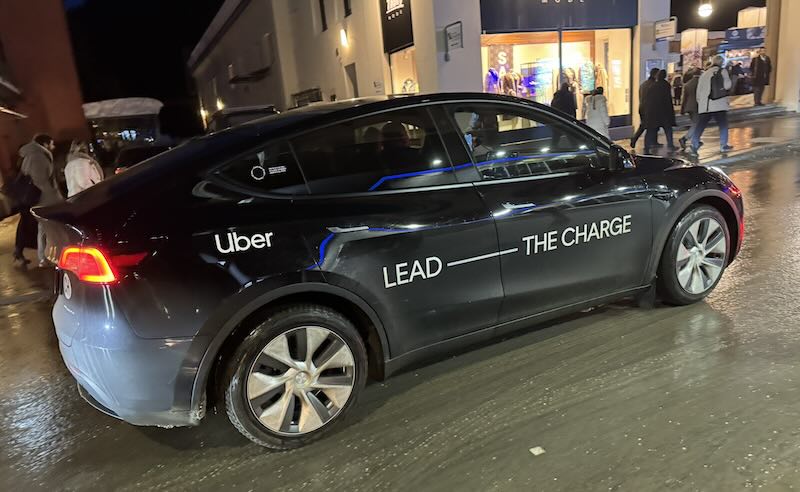In a FT interview, Uber CEO Dara Khosrowshahi shed light on the company’s approach to the burgeoning robotaxi market. His comments reveal a nuanced strategy that balances competition with collaboration, particularly in relation to Tesla’s anticipated entry into the space.
Khosrowshahi’s acknowledgment of the challenges in competing with Elon Musk’s Tesla underscores the formidable nature of the autonomous vehicle landscape. “Obviously, competing with Elon Musk is no easy matter,” he stated, setting the tone for Uber’s pragmatic outlook.
However, rather than adopting a purely adversarial stance, Uber’s CEO expressed openness to partnership. This approach aligns with the company’s broader strategy of platform agnosticism, potentially positioning Uber as a key player regardless of which companies ultimately dominate robotaxi technology.

Khosrowshahi outlined three potential scenarios for Uber’s future in the robotaxi market:
- Direct competition with Tesla
- Collaboration to integrate Tesla’s autonomous vehicles into Uber’s network
- A hybrid approach combining elements of competition and partnership
This multi-faceted strategy demonstrates Uber’s flexibility and readiness to adapt to the evolving autonomous vehicle landscape.
Uber’s current collaborations in the autonomous driving space provide context for its approach to Tesla. The company has already rolled out self-driving services with WeRide in the UAE and partnered with Waymo in U.S. cities like Austin and Atlanta. These initiatives showcase Uber’s commitment to integrating various autonomous technologies into its platform.
The potential addition of Tesla’s robotaxis to this mix could significantly expand Uber’s autonomous offerings. Khosrowshahi’s statement that “We’d love to have it on the platform” indicates a clear interest in such a partnership.
While Tesla’s robotaxis are a focal point, Uber’s strategy extends beyond a single partnership. The company’s collaboration with Cruise and its openness to working with multiple autonomous driving companies highlight a broader vision for the future of ride-hailing.
This approach positions Uber not just as a competitor in the autonomous space, but as a potential facilitator of industry-wide growth. By providing a platform for various autonomous technologies, Uber could play a crucial role in the widespread adoption of self-driving vehicles.
Khosrowshahi’s assertion that “this is not going to be a winner-take-all marketplace” reflects a realistic view of the autonomous vehicle industry’s future. This perspective allows Uber to pursue multiple strategies simultaneously, hedging against the uncertainties inherent in emerging technologies.
Uber’s strategy of openness and flexibility could prove advantageous. By maintaining relationships with multiple partners and remaining adaptable to new technologies, the company is positioning itself to thrive in various potential futures of autonomous transportation.
Whether competing, collaborating, or some combination of both, Uber’s approach to robotaxis seems geared towards ensuring its relevance in the shifting landscape of urban mobility. As the industry races towards an autonomous future, Uber’s strategy might just help it stay in the driver’s seat.
Related Post
Uber CEO Challenges Tesla Robotaxi Vision, Proposes Partnership
Tesla Robotaxi: How Removing Steering Wheels Could Drive Autonomous Acceptance
Tesla CyberCab: Autonomous Ridesharing Revolution | Under $30k | Coming 2026
